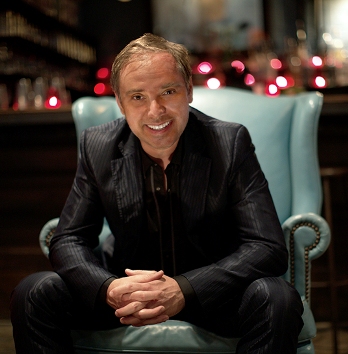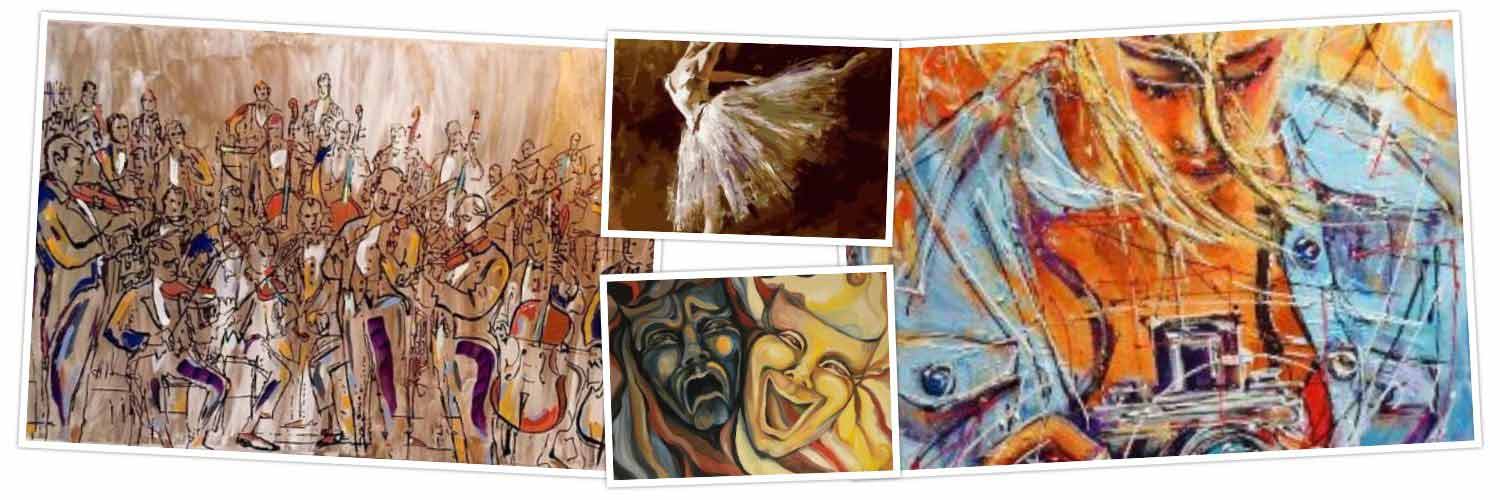Sebastian Lang-Lessing, Conductor and Music Director of the San Antonio Symphony
By JASMINA WELLINGHOFF, Editor –
You were quoted as saying “There’s nothing more exciting than creating a new hall,” implying that an orchestra can mold the concert hall’s acoustics to create a unique sound. Could you elaborate on that?
As the violin is the instrument of the violinist, the instrument of an orchestra is the hall. The hall that melds the sounds of musicians playing together in a certain way effectively creates the sound of an orchestra.Then, that’s the sound that that particular orchestra will develop and will likely bring to other halls. Some world-famous symphonies are identified with their performance halls. What would the Vienna Philharmonic be without the Musikverein?

How about the Tobin and the San Antonio Symphony?
For most of our repertoire, this melding component, melding the sounds
together and giving the overall sound a rounded, burnished quality is very
important, and we get that in the Tobin performance hall. Also, we are able to
have a much wider range of dynamics, which was evident yesterday when we played
the Mahler symphony, Resurrection. You can play very softly and it’s
still audible in the entire hall and it’s still rounded. But you can also build
up to a crescendo without saturating the sound too early.
You have conducted orchestras all over the world and
served as music director of several. Why did you want the SAS job?
I had been coming to America since 1970 but mainly as an opera conductor,
in Houston, Washington, Los Angeles, Denver, Dallas… and then came the San
Antonio opening. I didn’t know much about San Antonio. So, I came here and I
fell in love with the place. On top of that, the idea of a new hall was
definitely a positive thing. (The Tobin opened in 2014)
And why have you decided to leave after ten years? Is there some kind of unwritten rule that music directors must move on after a certain time? (The 2019-20 season is his last one here as music director.)I think ten years is a very healthy tenure. It allowed me to explore most of the repertoire, and since I’ve been doing all these festivals (focusing on specific composers) I pretty much conducted all the major works with the orchestra. It is time to move on to create something fresh. It’s not that you have nothing more to say; it’s just that we all have to keep being curious about new possibilities. Still, it was important for me to continue to have a role here because I still feel responsible for the orchestra and the organization and that’s why I will stay on as music director emeritus.
What do you like best about San Antonio?
The people. They are very warm, welcoming and hospitable. I made great
friends here, lots of friends. There’s a quality of warmth and commitment here
that’s unique to San Antonio.
You have worked in many countries, sometimes for
prolonged periods of time. How many languages do you speak?
Five, and I can read Russian. I learned Russian to help me with conducting
Russian opera. And I speak French, Italian and Spanish, in addition to English
and (his native tongue) German.
Who is your favorite composer or composers?
I feel close to composers who compose from the perspective of expressivity
and emotional impact. And that applies to a lot of composers from the Baroque
period to contemporary ones. I am not a big fan of “mathematicians” in this
field. It’s important that an artist – conductor or performer – bring his own
personality into a composition. And the greatest composers allow for that. Even
in the case of Gustav Mahler, who was so detailed in all of his annotations, if
you don’t bring yourself into it, the music is not quite alive. Sometimes, as a
cleansing, I also like the cerebral “mathematical” pieces. Minimalist music is
such an example.
Throughout your time here, you have included contemporary
composers in the repertoire. Why are audiences so slow to warm up to most
contemporary art music?
That’s true. And that’s why, I think, the series with Fourteen American
Preludes that I did in our fifth season was the right approach. A short (commissioned)
contemporary piece was in every program and it gave our audiences a glimpse
into how rich and stylistically wide-spread contemporary music is. If you don’t
perform contemporary composers, the music written 200 years ago will also die.
You have to see music in context. The composers of today emerge from those
traditions… Sometimes new music helps us understand the older music better. In
general, audiences don’t want things that they don’t know, and that’s why it’s
so important for us to expose them to new things.
What is the best advice you ever received and from whom?
You get the best advice from people who are not giving you advice. The best
advice comes through a conversation or through an example of behavior, and you
filter the advice out of that. For me that came from Maurice Bejart, the great
French choreographer, who never created anything without incorporating a
profound message into his art. Just the way he approached his work was
inspirational to me. Another “adviser” was Gotz Friedrich, the former Deutsche
Oper general director in Berlin, who gave me my first big opportunity by hiring
me. Working with him I learned a lot just by observing him. These people
“advised” me indirectly. The greatest advice that I filtered out from them and
others is: Be open-minded and absorb as much as you can.
Do you listen to pop music genres”
When I was in France, I fell in love with Patricia Kaas. We actually had a project together. She is a
great artist. Also, the movie Bohemian Rhapsody reminded us just how
creativethe rock band Queen was. Michael Jackson, Prince, also great
artists. But in my car, I only have Latino music.
Where does your family live?
My wife and our 11-year-old daughter live in Berlin. Our daughter went to
kindergarten here in San Antonio but we decided that she needed stability and
consistency once she started school. (The couple have a home in San Antonio,
too.)
As a conductor and music director, you are in charge of a
lot of people who must work together. Do you have any useful insights into how
best to deal and manage people?
God! If I had that secret, I would be a psychological coach traveling all
around the world. An orchestra is an extremely complex group. The conductor is
working with 70, 80, or like this weekend, 100 people on one stage, a very
confined space, and under time constraints. That in itself creates a lot of
tension. And then, there are personal tensions between individuals, all sorts
of emotions. You have indeed to be more
like a psychologist sometimes but there’s no universal approach.
What do you like to do away from work?
I swim, I hike, I cook, I read.
Will you miss us after you leave?
Of course. And I hope you’ll miss me. But I will keep in touch (as director
emeritus). I do want to see the San Antonio Symphony organization become stable
and thrive. Sustainability is a constant struggle for the performing arts and
nonprofit organizations in this country. I think what’s needed is a fundamental
change in the way the organizations are funded. We are part of the
infrastructure of the city. Why is it OK to invest millions of taxpayers’ money
into public art in San Antonio without anyone asking why that art isn’t privately
funded. Why can’t creative people like artists become essentially employees of
the city like they are in Berlin, in Belgrade, in Paris… Taxpayers should be
willing to support a symphony, a theater company, a ballet company. San Antonio
taxpayers were very willing to support the Tobin Center but, of course,
taxpayers were under the impression that a building like the Tobin would help
the organizations that it was built for. We have been proven wrong.
Five years into it, this beautiful home is also a problem
for us because there’s a conflict of interest between running a profitable
operation and having a sustainable symphony. When a hall like the Tobin is
built, largely with government money, it should go without saying that you have
to also fund what is presented there, which is the reason for building the
hall. In the situation we have now, the Tobin is forced to book commercial
acts, such as The Price is Right, to sustain itself. A show like that is
not performing arts. It doesn’t belong in the Tobin. Here’s the main problem: A
symphony orchestra is a necessity in a city of the size of San Antonio. The
Tobin is valuable because of what’s going inside the building, not because of
the building itself. You can’t tell me that it would be outrageous to implement
a small tax to support our cultural institutions. That’s what is being done
throughout the world, throughout the world!

I totally agree with Maestro!